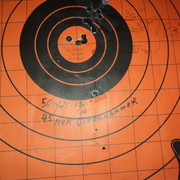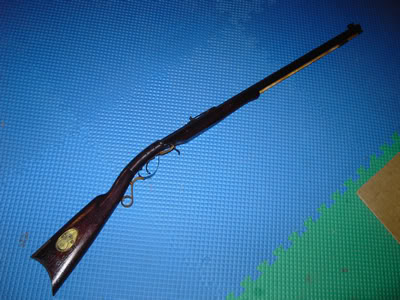Archer 756
40 Cal.
Looking for comments on progressive rifling. 


That is my understanding also based on what I have heard from others and have read. I believe if it gave superior accuracy we would see it used almost exclusively in rifles.Seems to work OK, but no better than standard rifling.
I don't know much about progressive rifling but what I do know is when the bullet starts in a slow twist and the twist tighten as it goes It down the barrel it has to cut new groove in the bullet. I can't see how it is an improvement? It apears to me in my simple mind that it might hurt accuracy?That is my understanding also based on what I have heard from others and have read. I believe if it gave superior accuracy we would see it used almost exclusively in rifles.


You are confusing gain twist with progressive depth twist. Two different animals. In a gain twist the bullet doesn't "cut a new grove" it just follows the rifling twist as it gets faster. In a progressive twist rifle the twist is constant, but the depth of the rifling gets shallower as the bullet gets closer to the muzzle.I don't know much about progressive rifling but what I do know is when the bullet starts in a slow twist and the twist tighten as it goes It down the barrel it has to cut new groove in the bullet. I can't see how it is an improvement? It apears to me in my simple mind that it might hurt accuracy?
Ned Roberts book ,"The Muzzle-loading Cap Lock Rifle" talks about it. I tell ya, those fellas had there stuff together.Note! Looked up more info on this subject and found out that almost all of top shooters for NSSA shot progressive arms. This type of rifling was also used in War Between States by snipers.
I still don't understand? If it starts in a slow twist and the twist gets faster it looks like to me it can't follow the slow grooves? It may widen the grooves as it travels down the barrel but then it couldn't seal the gasses completely? On our fighter jets the guns use a progressive twist so there must be something going on that no one has yet explained?You are confusing gain twist with progressive depth twist. Two different animals. In a gain twist the bullet doesn't "cut a new grove" it just follows the rifling twist as it gets faster. In a progressive twist rifle the twist is constant, but the depth of the rifling gets shallower as the bullet gets closer to the muzzle.
Exactly, good explanation.The grooves are still the same distance apart. They just have more rotations given the same length of barrel. Think of a train on a track. The track might have a turn that progressively gets tighter, but the track is still the same width.
It also works with some conicals. The key is the length to caliber. A round ball is almost exactly 1:1. Some short conicals are in that area too. A round ball theoretically contacts the bore only at the tangent point of the circumference.Harry Pope experimented with gain twist rifling a lot. He determined he could see no advantage in accuracy over straight twist rifling. The caveat is, he was shooting elongated projectiles, rather than round ball. From my experience with gain twist, same holds true for round ball.
Enter your email address to join: